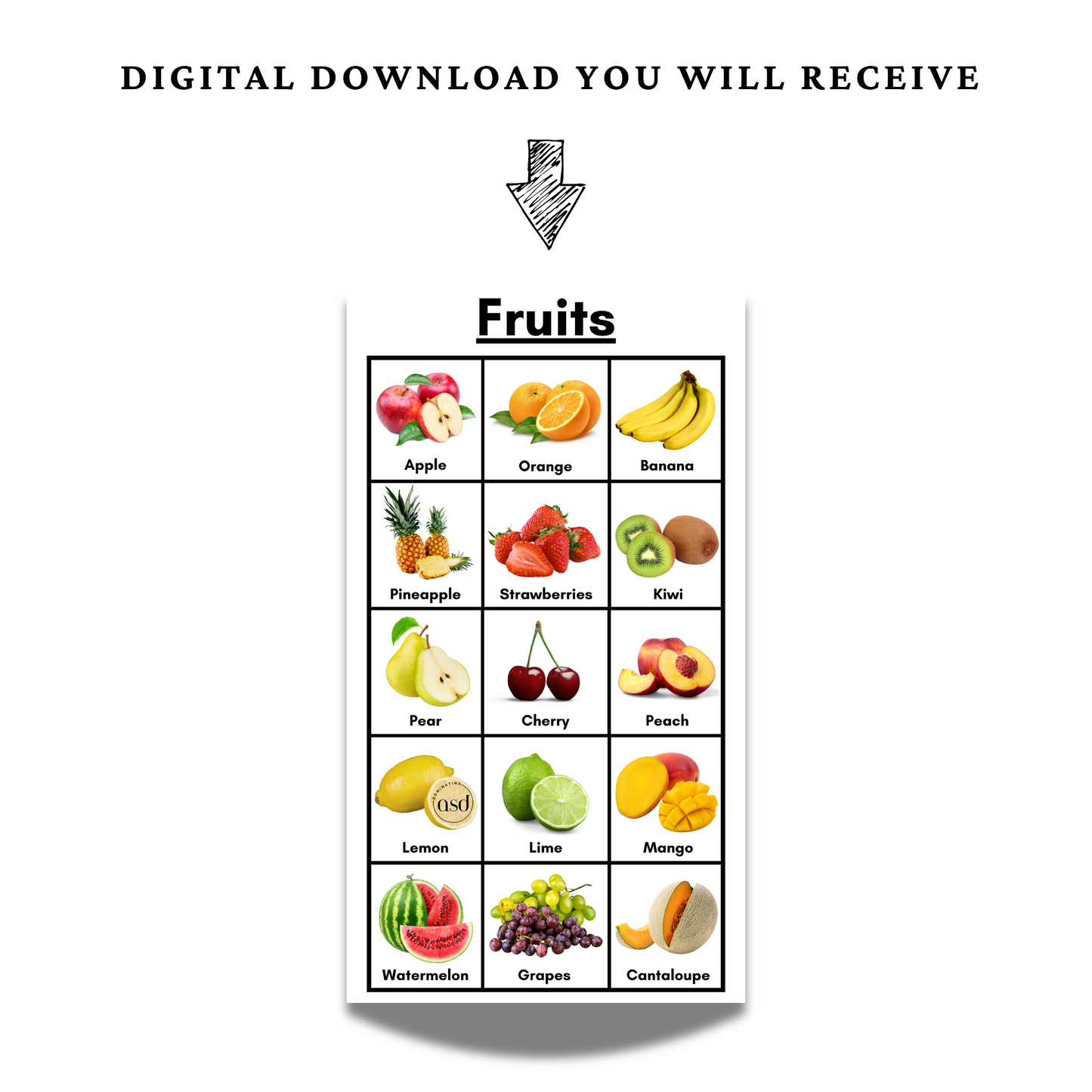My Store
Fruits Chart
Fruits Chart
Couldn't load pickup availability
A visual fruit chart can be an excellent educational tool for children learning about fruits and nutrition. Here are some benefits:
1. **Engagement**: Bright colors and images of fruits capture children's attention, making learning more enjoyable and interactive.
2. **Memory Aid**: Visual representations help reinforce memory retention. Children are more likely to remember fruits they see illustrated rather than just hearing their names.
3. **Nutritional Education**: A fruit chart can include information about the nutritional benefits of each fruit, teaching children about healthy eating habits.
4. **Language Development**: Introducing new vocabulary related to fruits (like names, colors, and shapes) can enhance language skills.
5. **Categorization Skills**: Children can learn to categorize fruits by color, size, or type, promoting critical thinking and organizational skills.
6. **Cultural Awareness**: A diverse fruit chart can expose children to fruits from different cultures, fostering an appreciation for diversity.
7. **Sensory Learning**: Children can be encouraged to touch, smell, and taste real fruits, enhancing their sensory experiences while referring to the chart.
8. **Creative Activities**: A fruit chart can serve as a basis for various activities, such as drawing, coloring, or even cooking, integrating learning with play.
9. **Healthy Choices**: Familiarizing children with fruits can encourage them to make healthier food choices as they grow.
10. **Interactive Learning**: The chart can be used in games or quizzes, promoting interactive learning and teamwork among children.
Overall, a visual fruit chart can make learning about fruits fun and informative, helping children develop a lifelong appreciation for healthy eating.
Share




